This stand mixer has been a best-seller for over a century - I finally understand why
KitchenAid always delivers the (baked) goods
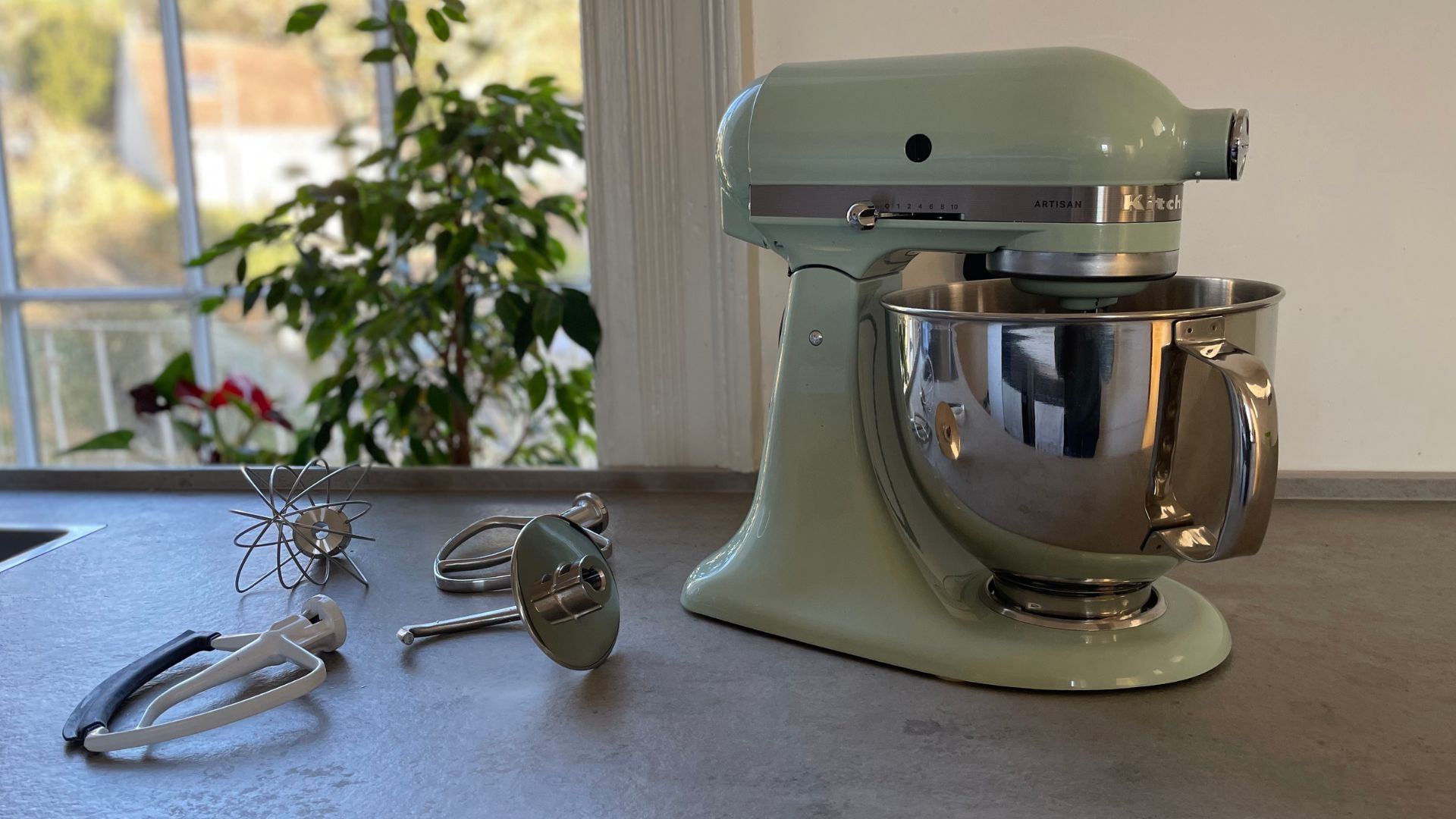
The Artisan is a best-seller for a reason. It's timelessly designed, robust, and easy to use. If you're a committed baker, you'll get great use from this. However, it's expensive if you're unsure.
-
+
Timeless design available in a range of colours
-
+
Robust body and accessories that will last well
-
+
Versatile speed settings that are easy to use
-
-
Expensive compared to other models
Why you can trust Woman & Home

The most iconic, popular KitchenAid of all time is the Artisan Stand Mixer. Its sheer presence in homes and kitchens around the country should tell you enough about its quality and prestige, but just in case you wanted more evidence, I put this to the test in our very own kitchen.
There isn’t a stand mixer more deserving of the title ‘best stand mixer’ than the KitchenAid Artisan. The brand has built off its iconic retro body for over a century. Over the years it has stayed roughly the same, although the brand has added more colour options, more power, and a bigger bowl over the years. There are some other touches take this into extra special territory too, but those are the fundamentals that tip this into top-tier territory
I got my hands on one of these highly desirable models and I was worried that it would have been overappreciated online. However, this is a kitchen staple. It’s an heirloom, a must-have, and possibly my new best friend. Can you tell I’m sold?
Specifications
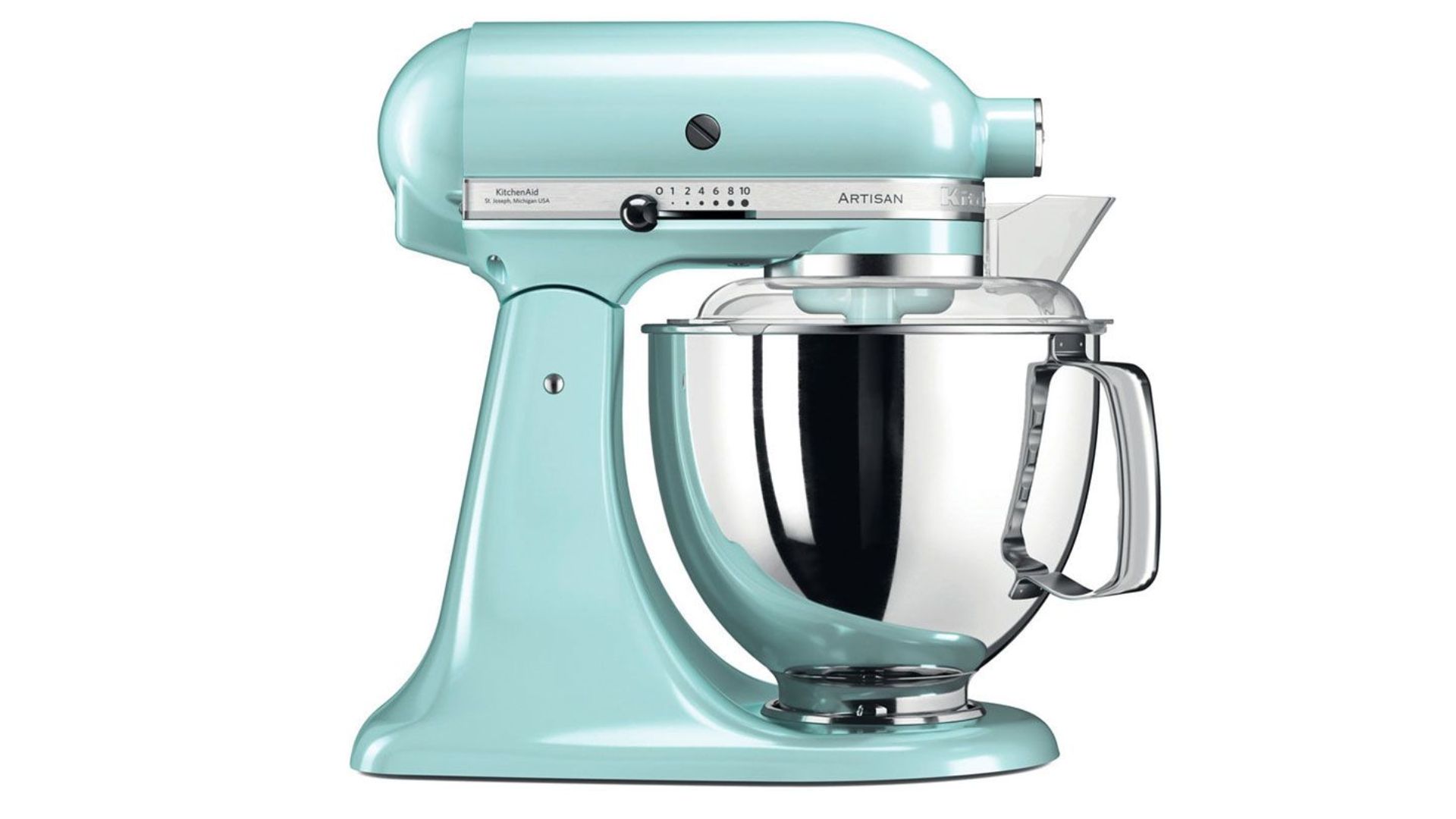
| Dimensions | 36 x 24 x 27 cm | Row 0 - Cell 2 |
| Weight | 11.1 kgs | Row 1 - Cell 2 |
| Power | 300 watts | Row 2 - Cell 2 |
| Material | Stainless steel, cast iron | Row 3 - Cell 2 |
| Speed settings | 10 | Row 4 - Cell 2 |
| Accessories | Splash guard, k-beater, whisk, dough hook | Row 5 - Cell 2 |
| Guarentee | 5 year motor, 15 year part replacement | Row 6 - Cell 2 |
Unboxing
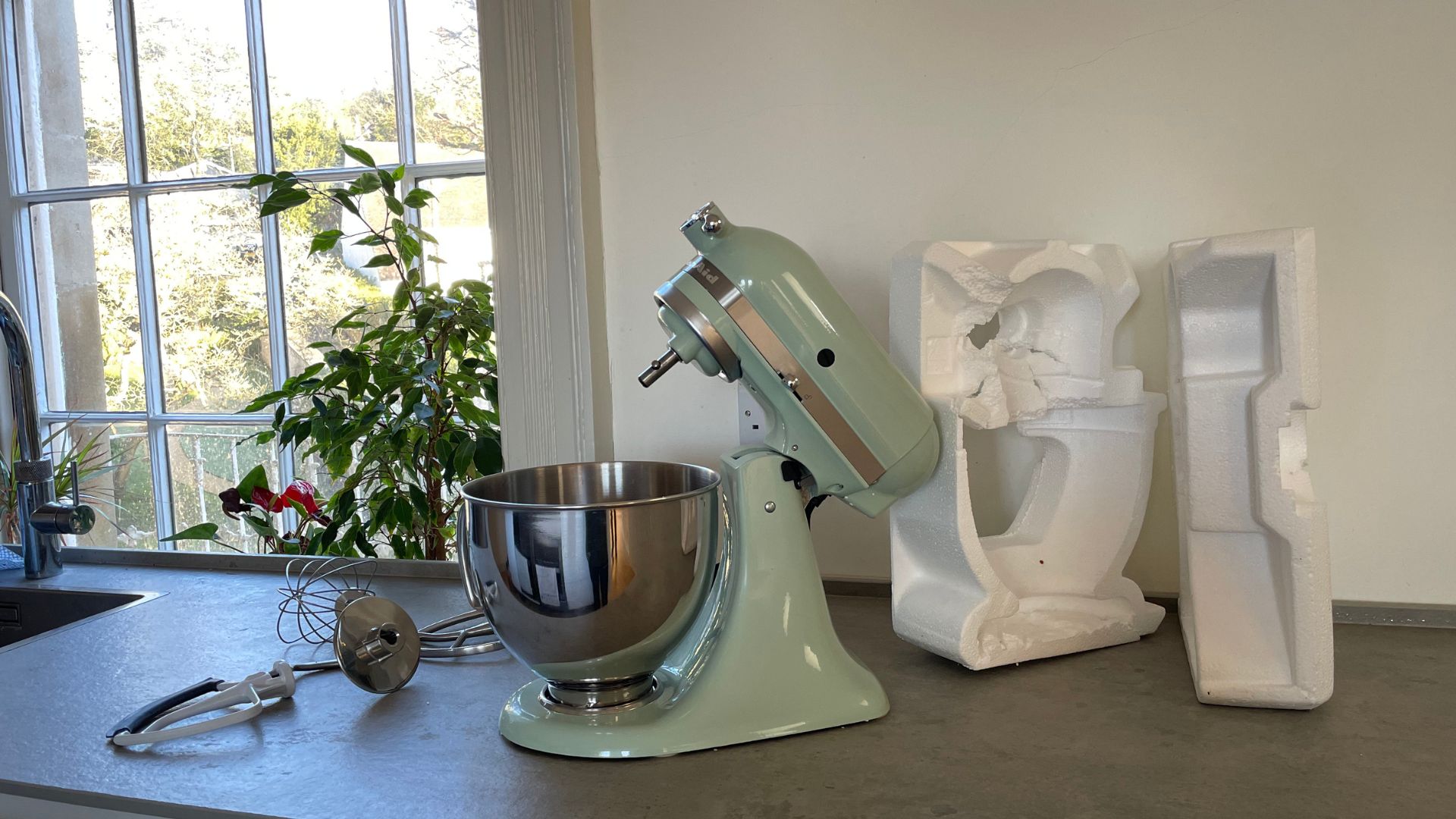
KitchenAid’s strong suit is aesthetics. The signature, retro silhouette is instantly recognisable and the beauty of the Artisan is that it comes with so many colour options. You can go bold and bright or sleek and subtle — whichever you opt for, it’s been scrutinised by experts to make sure that the hue is just right for delivering a premium and yet personal air.
It’s a good job that they do this well, because the packaging is not my favourite part of the stand mixer. It does the job of keeping this in good condition, but KitchenAid uses a lot of polystyrene to keep this looking good. This means that you’ll end up with a bin full of non-recyclable waste which is a practical pain as well as an environmental shame. It’s minor and not something that will affect your interaction with the KitchenAid beyond — at most — a sigh for the sake of the planet (and your bins), but it’s a sustainability point that I like to keep an eye on.
Who would it suit?
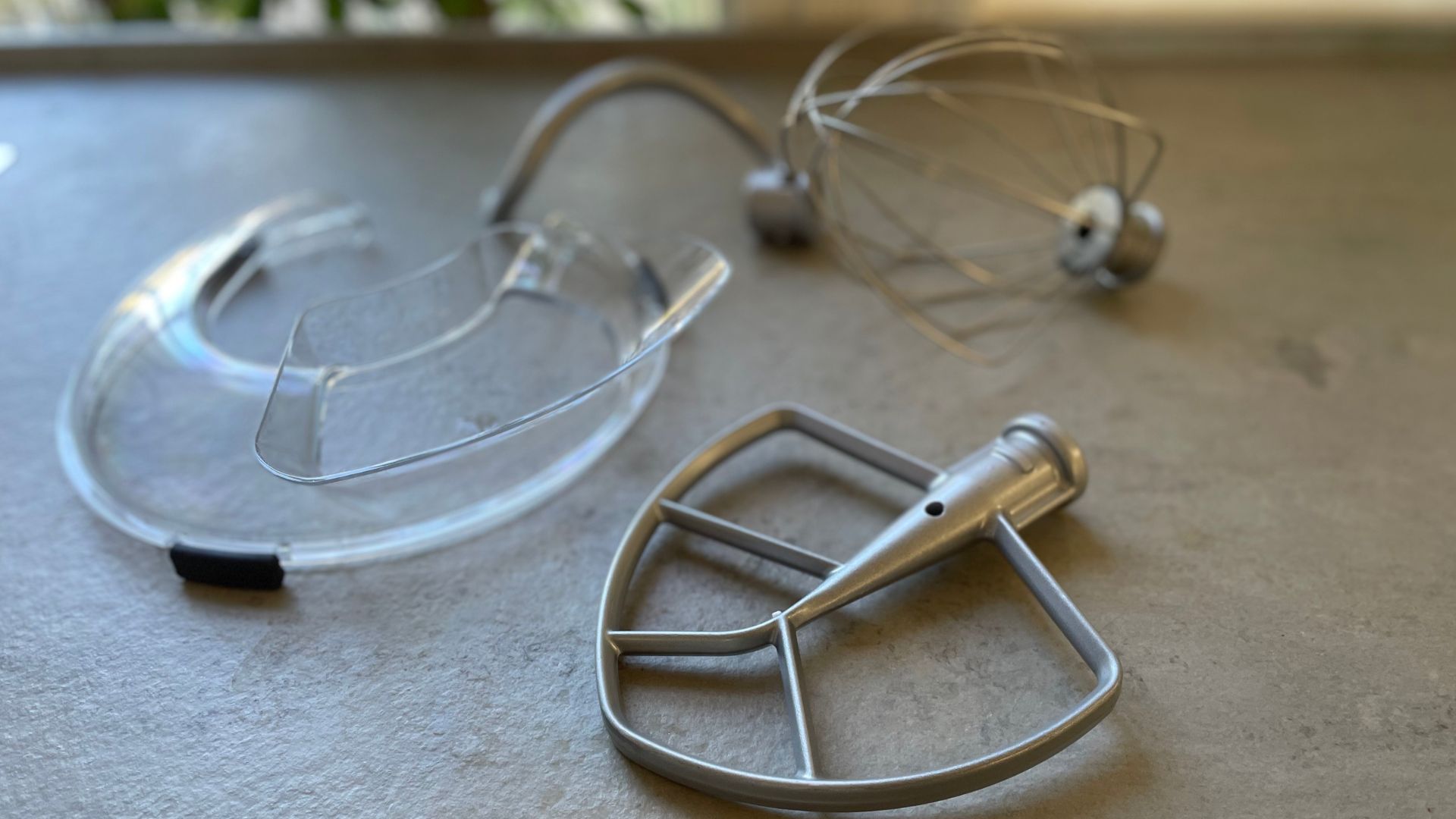
The KitchenAid Artisan is the perfect hub for any budding baker. It’s simple to use, robust, and powerful too. Of course, all that comes with a hefty price tag, which means that you’ll need to know that you’re serious about your baking. If this is a fad, investing in a KitchenAid is an expensive impulse. If you know you’ll be baking for a lifetime, this heirloom-worthy investment is worth baking.
For most homes, a 4.8-litre capacity is plenty. You can bake two sponge cakes, a family-sized loaf of bread, and whip nearly a litre of cream. Professional bakers who are working worth drier, tougher doughs might want a bowl-lift mixer, which have more weight and stability in the base. These are big and unnecessary for your average home baker, but if you have bigger ambitions, it could be worth the upgrade.
What is it like to use?
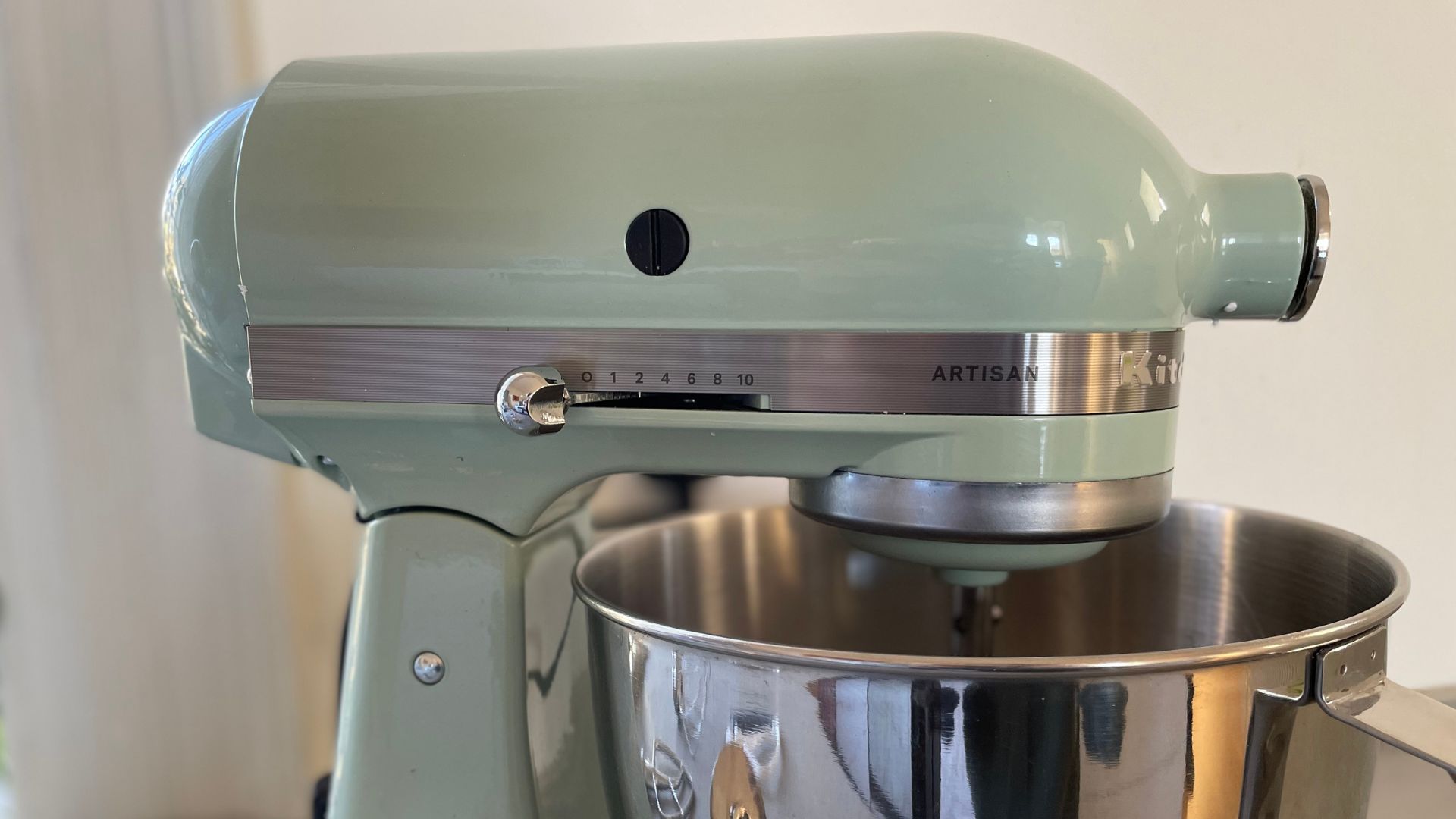
The Artisan is blessed with a very simple set up. You push a lever to unlock the head, tilt the head back, and lock your accessory into place. Twist the bowl into a locked position, pull the same lever that you unlocked the lid with, and pull it down and into place. There are ten speed settings, which you can select in increments of two, although you get the option to go from 0 to 1 and then to 2, 4, 6, and so on.
As with all KitchenAids, this uses planetary action, which means that the head spins as it moves around the bowl, hitting as many touch points as possible. From the results that I got, I can believe that this is a genuinely good feature rather than a gimmicky line.
Test 1: cake

The first test that I put the Artisan through was making chocolate cake. To do this, I used the classic k-beater. This is made from solid stainless steel, so it’s weighty. I like this density, because it creates a simultaneously robust and premium feel. I like to think I could mix concrete in this, although I pray that my cake mixes never resemble concrete.
To start, I creamed together my butter and sugar. The Artisan whizzed through this, leaving me with a soft, fluffy mix in a matter of minutes. I then added in my flour, cocoa powder, eggs, and vanilla. I switched the speed setting down to one, so that I could avoid getting flour clouds puffed into the air. Of course, KitchenAid provides an effective splash guard (which I love), but I like to test stand mixers without them. It’s a little extra challenge.
All of my ingredients came together really nicely. The batter looked smooth and silky and even the creamed butter and sugar at the bottom were worked into the mix, which seems to be a rarity for stand mixers these days.
I wanted to test out the KitchenAid on something a little thicker, so I made a cookie dough too. This needed me to cream my butter and sugar together, as with the cake. Then, I added my flour, eggs, and vanilla to create a thicker dough. The k-beater didn’t have any issues bringing this all together into a lovely ball. It pulled all the sticky bits off the side too.
When I scattered in my chocolate chips, the Artisan had incorporated them through the dough, really evenly. It’s a great result for the k-beater.
Test 2: bread
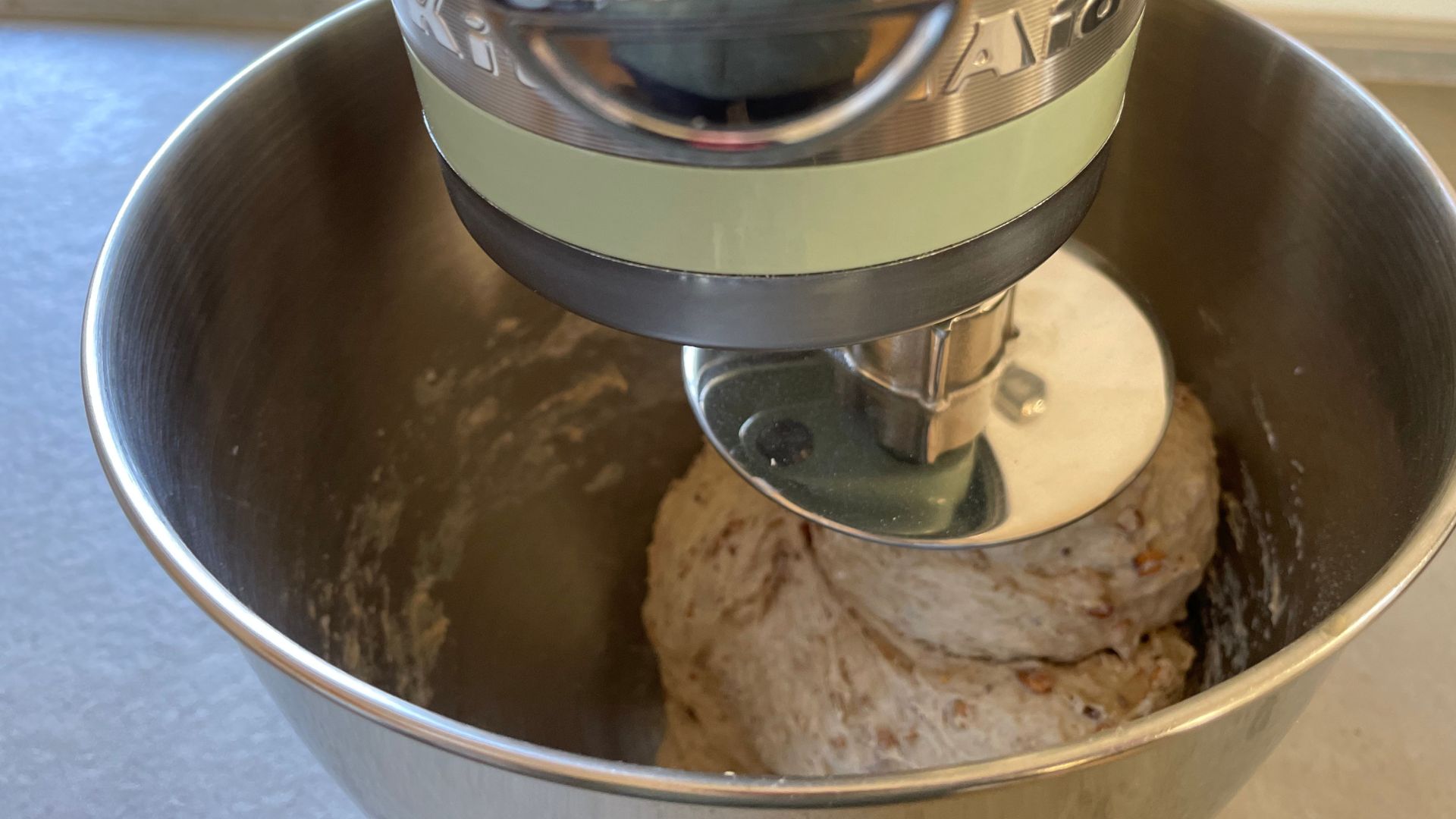
My next test for the Artisan is making bread dough. A common criticism of tilt head stand mixers in general is that they’re less stable when it comes to kneading tougher doughs. Kneading my standard brown bread recipe wasn’t a problem for the Artisan. I make a family-sized loaf, with 500g of flour and this didn’t feel even close to wobbling. In fact, I was over the moon with the results of the Artisan’s kneading. In eight minutes my dough had a wonderful spring and elasticity. It looked and felt smooth. I tried kneading it by hand and concluded that all the work was done — it’s perfect.
If you’re interested, the bread turned out well. It had both a great crumb and rise, largely thanks to the kneading. This is great proof that the Artisan can handle home bakes and breads. It’s only if you’re doing double quantities and going commercial that you might want to think about your options, but we can talk more about that later.
Test 3: whipped cream
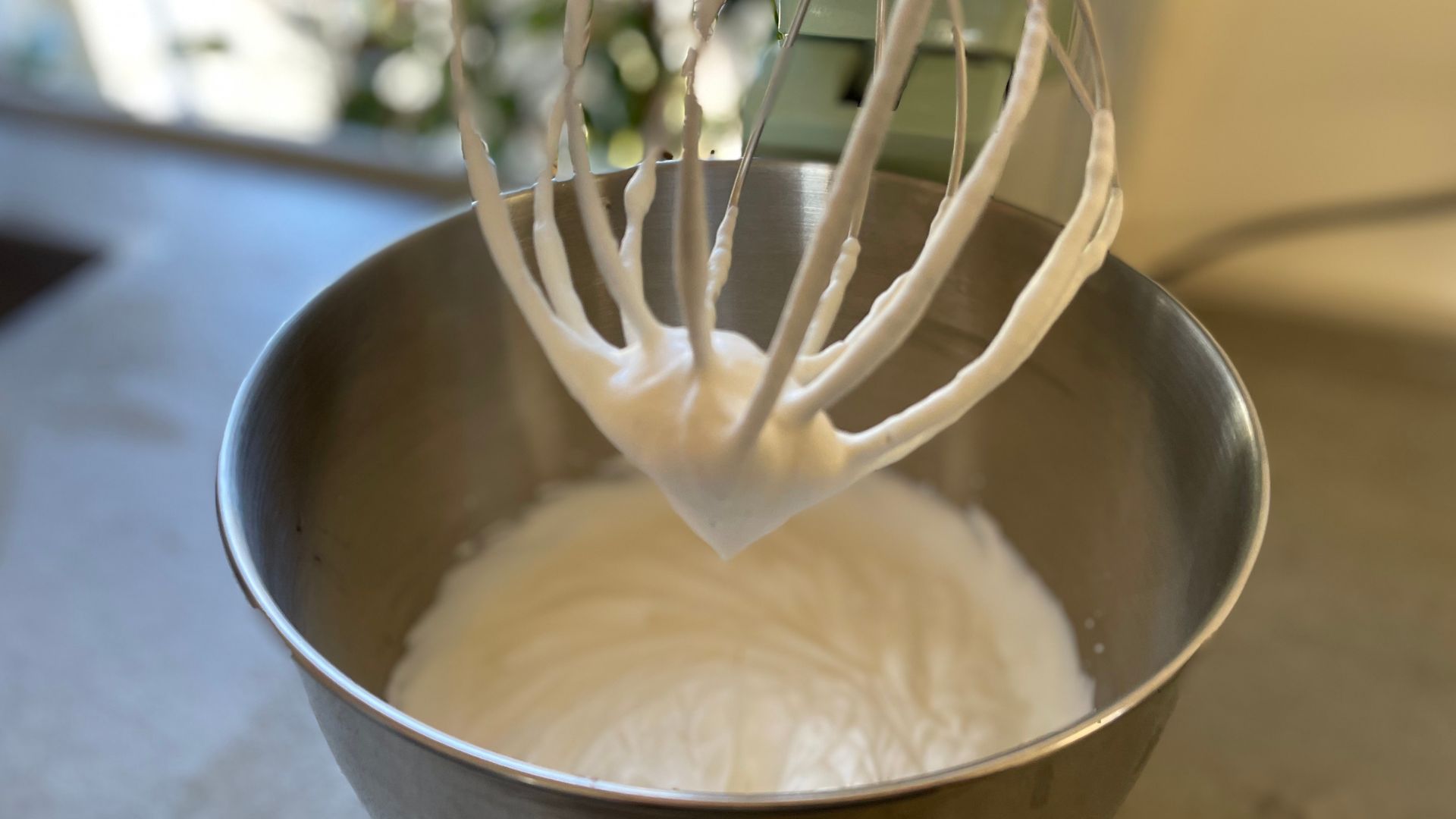
There are two tests that I wanted to run the Artisan through here: whipping cream (dairy double and a vegan alternative) and whisking aquafaba (chickpea water). The cream is my standard test, so I’ll start with how that went. In a nutshell, it was a great success. The my double cream, on full speed, whipped up into gorgeous, silky peaks within two minutes, which is speedy for a stand mixer. I gave it a precautionary extra 30 seconds and was pleased with the results. The air was expertly incorporated, leaving a professional result behind. The vegan cream is much of the same story. This can be a little more stubborn to work with, so I gave it three minutes before checking. It ended up needing another minute before I was satisfied that the peaks would hold their height, but the results were very pleasing.
The aquafaba (chickpea water) can, in theory, be whisked like cream, so that it forms stiff peaks. This is really tough work to do by hands, but it’s becoming a requirement for lots of vegan recipes, so I thought I would give it a go. I emptied one can’s worth of chickpea water into the base of the Artisan and, I’m not going to lie, it looked bleak. Imagine a small, muddy puddle pooled at the bottom of your stand mixer and that’s what we’re dealing with. I let the whisk whip around for five minutes and, to my shock, came back to find a slightly yellow version of my double cream. It worked like magic.
Cleaning

All of the KitchenAid accessories, including the bowl, are dishwasher-safe. This makes life very easy: pop it all in when you’re done and set the machine running. If, however, you’re anything like me, you’re probably wondering whether it would be a bad thing to wash the parts by hand. No, dear baker, it would not. The guarantee on your whole stand mixer is five years and it’ll be repairable for fifteen years. If you want to ensure that yours will survive that long, I would recommend hand-washing your parts. This will put them through less wear and tear. Even if it takes a bit more time, it’s an investment in future you and your stand mixer.
I use a soft sponge and a gentle washing-up liquid, such as Method or Ecover. Then, all you need is some warm soapy water and it should all come away clean. If your bread dough has dried onto the bowl (I’ve been there more than I care to admit), leave it to soak for twenty minutes and then come back to it. Simple.
How does it compare?
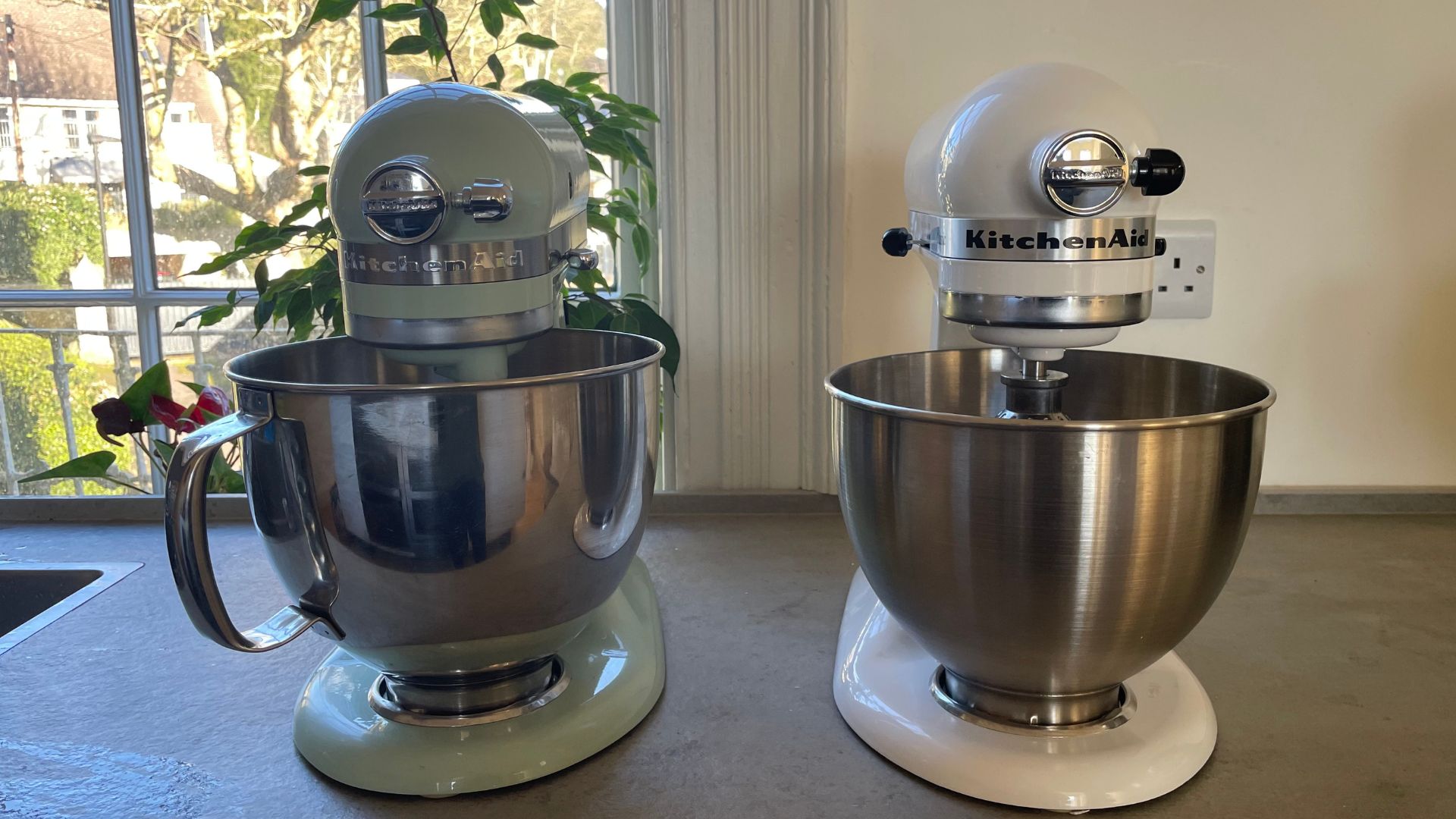
I teased you with a comparison to a more commercial model earlier, but I have another alternative that’s smaller and cheaper but I think we should talk about it. If you are a professional baker or you make tough dough at home, it’s worth looking at the KitchenAid Artisan 6.6-litre Bowl Lift model. This works using a slightly different mechanism you will lift the bowl up rather than tilt the head of the stand mixer back. this means that you’ll have a more stable base for your baking and by virtue of the design you’ll also get more capacity in the bowl. I generally recommend the bowl mixer for professionals and big homes. You’ll need to be a serious baker to make good use of this. The Artisan is perfect for the everyday baker and smaller Home quantities.
If you like the sound of the KitchenAid, but you’re not ready to give up space on your countertop there are other options to consider. The Kenwood GO Stand Mixer is brand-new to the market. It’s just 30 cm tall and comes with a useful handle on top. Performance wise it’s impressive. This lacks some of the finer details of the Artisan. For example I don’t think it’s as powerful, nor did I find it to be as thorough at mixing right to the bottom of the bowl. However, for half the price is incredible. Don’t think many people would complain about the issues that I’ve raised it’s only because I’m comparing it to the KitchenAid which is the best I’m mixer of all time so if you want to save a little money and space I think you’ll be very happy with the Kenwood Go.
Should you buy it?
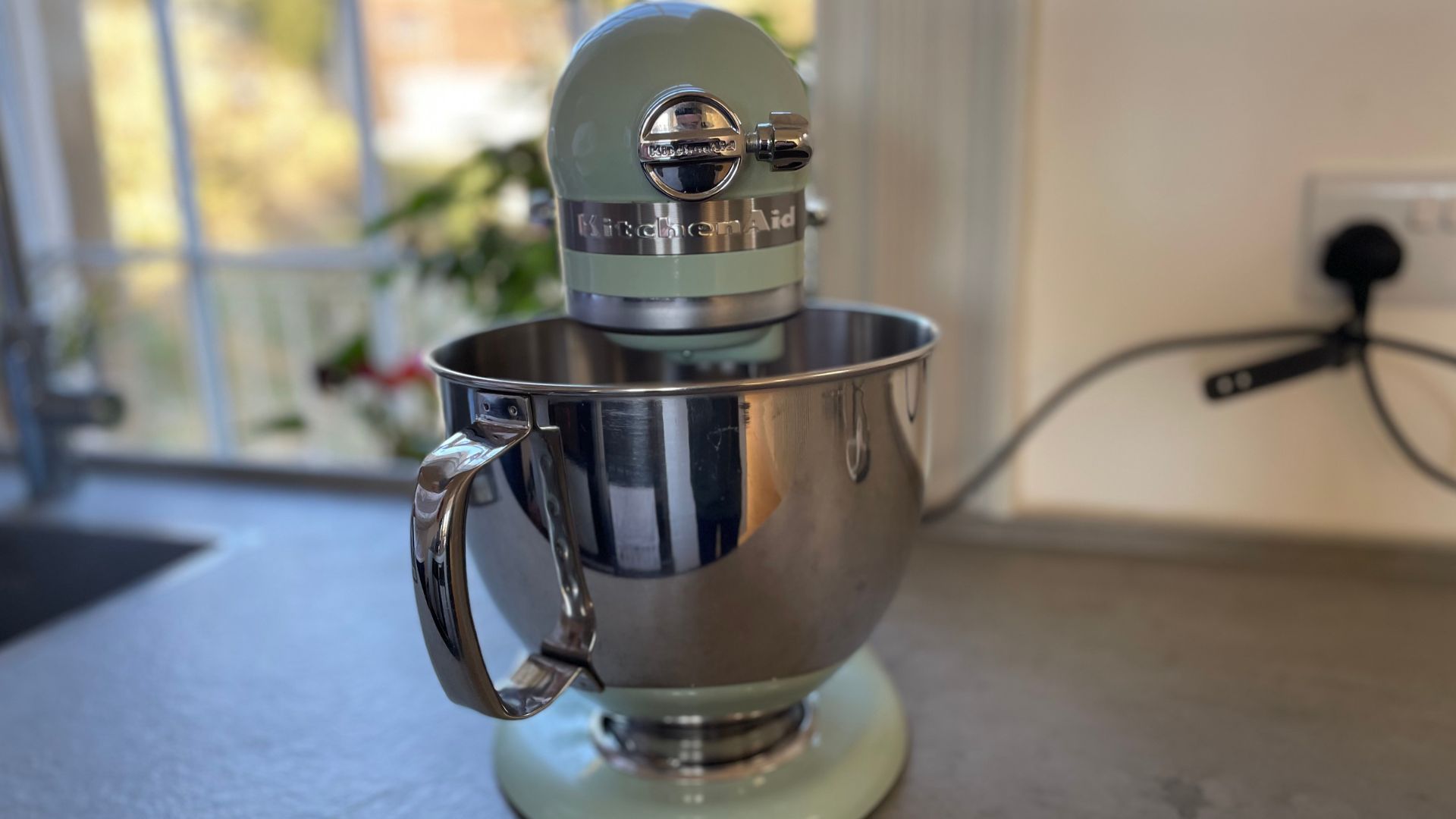
The KitchenAid Artisan Stand Mixer is the most iconic model of all time. In the two weeks that I spent using the Artisan, it became immediately clear why this is the brand's best-seller. Even though it’s expensive this is the kind of stand mixer that you pass down through generations. It’s a reliable durable and stylish model that you can use for your daily bakes your special bakes and every kind of cake.
How we test
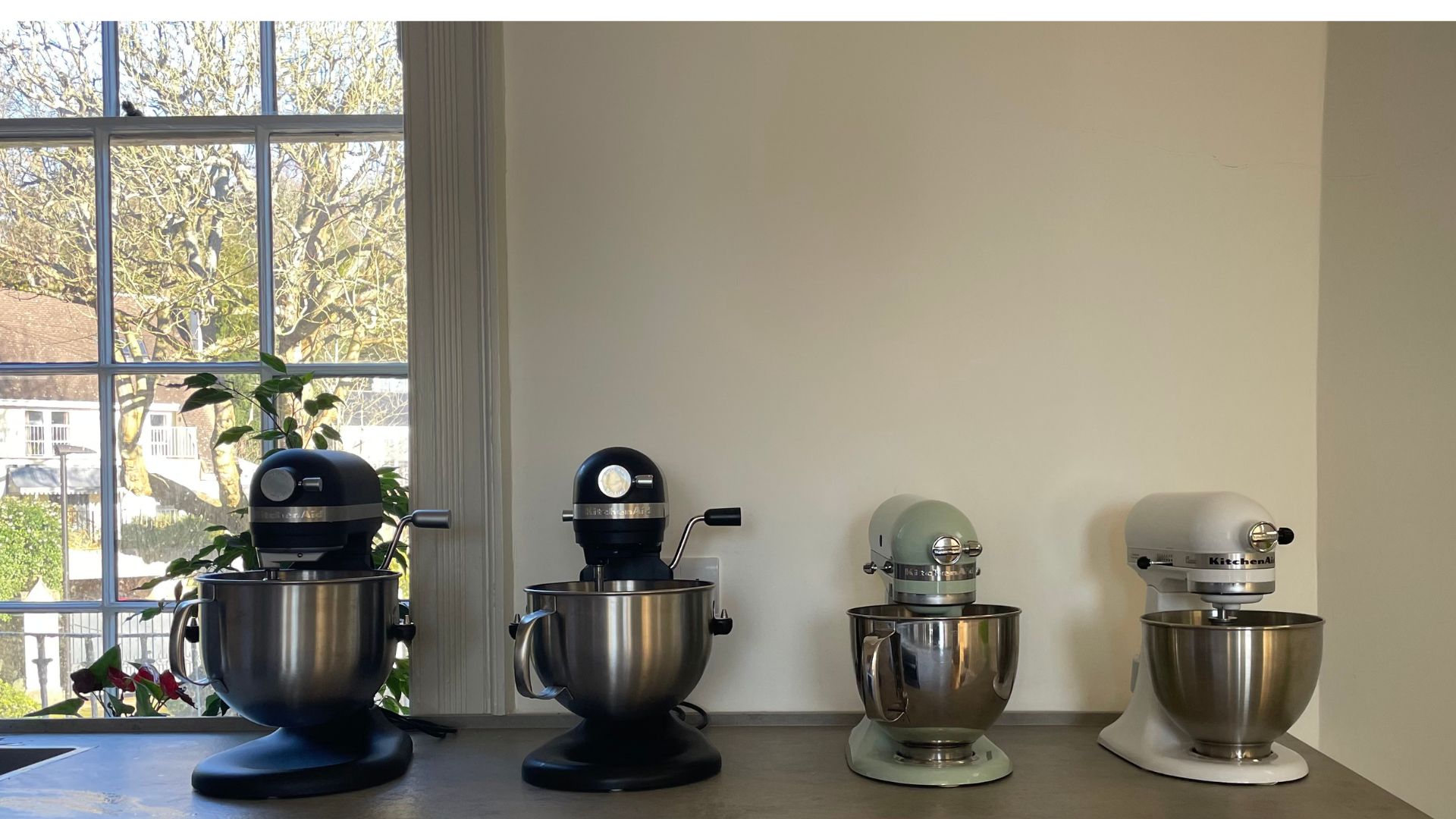
At woman&home, we have a rigorous process for how we test some mixers not in the least because I am a keen baker so I’ll take any excuse to make cakes bread and whipped cream and call it work. Every stand mixer that I review gets at least two weeks on my countertop. Initially, I’ll put it through three tests that every stand mixer has to go through. Make a cake with the beating attachment; I whip cream with the whisk; and I need bread with the dough hook. This gives me a good gauge of how good the stand mixer is on the basics. With that in mind, I’ll move on to more adventurous bakes and cakes to find out the strengths and weaknesses of the stand mixer. By the end of my test, I'll have a good idea of who this suits and where other stand mixes are better. I’ll compare different models to give you a good gauge of what this is like in terms of value and where it sits in the market.
Sign up for the woman&home newsletter
Sign up to our free daily email for the latest royal and entertainment news, interesting opinion, expert advice on styling and beauty trends, and no-nonsense guides to the health and wellness questions you want answered.

Laura is woman&home's eCommerce editor, in charge of testing, reviewing and creating buying guides for the Homes section, so you'll usually see her testing everything from the best dehumidifiers to sizing up the latest Le Cruset pot. Previously, she was eCommerce editor at Homes & Gardens magazine, where she specialised in covering coffee and product content, looking for pieces tailored for timelessness. The secret to her heart is both simplicity and quality. She is also a qualified Master Perfumer and holds an English degree from Oxford University. Her first editorial job was as Fashion writer for The White Company.
-
 Prince Louis turns 7! Prince William and Kate release new picture that will have you saying exactly the same thing as us
Prince Louis turns 7! Prince William and Kate release new picture that will have you saying exactly the same thing as usThe wait is over as the Prince and Princess of Wales release Prince Louis’ adorable seventh birthday photo taken in Norfolk.
By Emma Shacklock Published
-
 Helen Skelton's layered look is giving me plenty of country chic style inspiration this Earth Day
Helen Skelton's layered look is giving me plenty of country chic style inspiration this Earth DayShe paired a mocha-coloured jumper with a blue shirt and a pair of wellies by Kate Middleton's favourite brand
By Caroline Parr Published
-
 What happens to Emily in The Handmaid's Tale and why did Alexis Bledel leave?
What happens to Emily in The Handmaid's Tale and why did Alexis Bledel leave?Emily was a fierce character and much-loved by fans who want to know more about her eventual fate in The Handmaid's Tale.
By Lucy Wigley Published